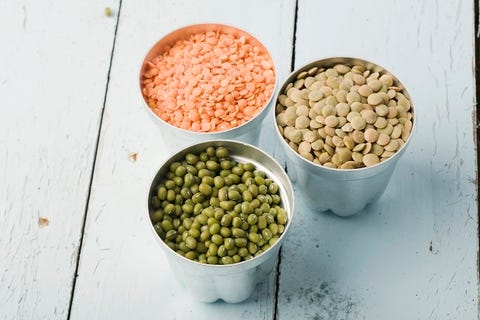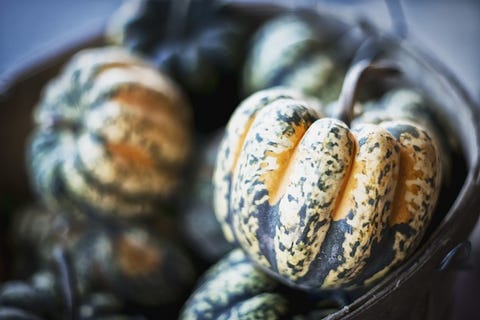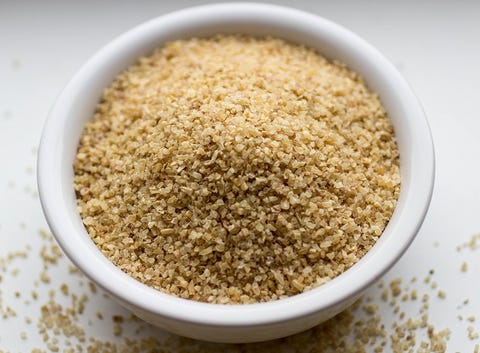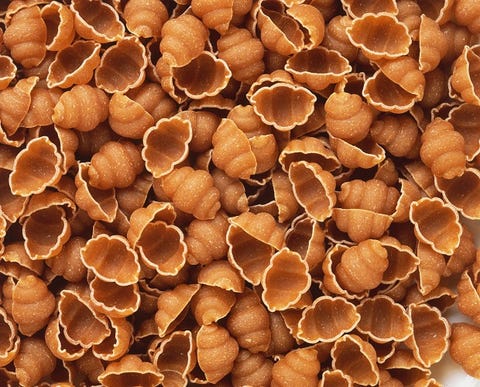How To Get Carb Compliance Certificate
Forget what you've been told—a diabetes diagnosis does not mean you've been sentenced to a life without carbs. Well, doughnuts may be off the list, but the right carbs can and should be part of a balanced diet for everyone, explains Anna Taylor, RD, a registered dietitian at Cleveland Clinic. In fact, for those with (type 1 or 2) diabetes, getting enough good-for-you carbs is essential for keeping blood sugar levels under control.
The key is to pick carb-containing foods that are also rich in fiber and/or protein, nutrients that actually slow the digestion and absorption of carbohydrates, resulting in a more gradual rise and fall of blood sugar levels. Here are Taylor's top 10 diabetes-friendly carb picks, all of which pack additional nutrients that can help prevent chronic conditions or diabetes complications down the line.
MORE: 13 Power Foods That Lower Blood Pressure Naturally
Lentils and Beans
Getty Images/Zenshui Laurence Mouton 
Lentils and beans are excellent sources of protein and fiber. The 19 grams of carbs from a half cup serving of cooked lentils come with 9 grams of protein and 8 grams of fiber (3 grams per serving is considered a "good" source of fiber; 5 and up is considered an "excellent" source, per FDA guidelines). One thing to note: You get the same benefits from canned beans as you do from cooked, dried beans—but you may want to rinse them first, which can eliminate more than 40% of the sodium.(Diabetes doesn't have to be your fate; Rodale's new book, The Natural Way To Beat Diabetes, shows you exactly what to eat and do to prevent the disease—and even reverse it.)
Peas
Black-eyed, split, and classic green peas have protein and fiber benefits similar to those of beans and lentils. One cup of green peas (before cooking) packs 8 grams of protein, 7 grams of fiber, and 21 grams of carbohydrates. Bonus: They have more than 20% of your daily value of vitamin K, manganese, thiamin, copper, vitamin C, phosphorus, and folate—all important for general health. Plus, some studies suggest manganese and vitamin C may help reduce diabetes-related blood vessel damage.
MORE: 25 Slimming Flat Belly Sassy Water Recipes
Apples
And pears, too—but make sure they're fresh. Both of these fruits are good sources of fiber, making them worth their naturally occurring sugar. One medium apple has 19 grams of carbs and 3 grams of fiber. Better yet, eat your apple or pear slices with some protein-packed peanut or almond butter to keep blood sugar even more stable. Just skip the juice, Taylor says—"it's a sugar bomb and devoid of fiber"—and dried fruits, which sometimes have added sugars and tend to be calorie-dense either way.
Berries
Blackberries, raspberries, strawberries, and blueberries have a low sugar content compared to other fruits, and they're packed with fiber, too, so they don't spike blood sugar quickly. You get 4 grams of fiber in one cup of blueberries, and 21 grams of carbs. Plus they have phytonutrients like phenols, flavonoids, and anthocyanins, which studies suggest help boost immunity—important for people with diabetes because colds and other illnesses can raise blood sugar levels. Bonus: Phytonutrients can help reduce inflammation and protect against certain cancers, too.
MORE: Top 10 Cholesterol-Fighting Foods
Winter Squash
Getty Images/Tim Pannell 
These squashes—including the acorn, butternut, spaghetti, and pumpkin varieties—are high in fiber to help keep blood sugar levels in check. One cup has 6 grams of fiber and 18 grams of carbs. Plus, squash is a good source of vitamin C and manganese, and is packed with beta-carotene, which the body converts to vitamin A—essential for healthy vision, skin, teeth, and soft and skeletal tissues.
Sweet Potatoes
When it comes to spuds, the orange variety is digested more slowly than white potatoes and doesn't raise blood sugar as quickly, thanks to fiber (one cup of cubed sweet potatoes packs 4 grams). Plus, sweet potatoes are packed with beta-carotene—you can get your day's worth in just one serving. (Give one of these 10 delicious sweet potato recipesa try.)
MORE: 10 Slimming Smoothie Recipes
Greek Yogurt
Greek yogurt does have some carbs that come from dairy's natural sugar, lactose, but its protein and calcium make it a smart pick when it comes to carb expenditure. Getting enough calcium—essential for bone health—is a must for people with diabetes, who may have low bone density because of lack of exercise and other factors. One cup of plain, fat-free Greek yogurt has 7 grams of carbs, 18 grams of protein (more than twice the protein in regular yogurt), and 20% of your day's worth of calcium.
Bulgur
Getty Images 
Looking for an alternative to another quinoa salad? Bulgur is packed with fiber and protein, so it won't spike blood sugar levels as quickly as refined grains like pasta—making it one of the healthiest whole grains out there. Bulgur is made from whole wheat kernels that have been boiled, dried, and cracked—and it's ready in about 10 minutes. One cup serves up 6 grams of fiber, 4 grams of protein, and just 25 grams of carbohydrates.
MORE: 25 Delectable Detox Smoothies
Oatmeal
We're talking about the steel-cut, classic rolled, or quick oats here—without the added sugars and flavors in the instant packets. Like other whole grains, oatmeal delivers a good dose of fiber, and studies suggest that regularly eating oats may even help lower (bad) LDL cholesterol levels. Keeping cholesterol down is key for people with type 2 diabetes because the condition is a serious risk factor for heart disease.
Whole Wheat Pasta
Getty Images/Steve Gorton 
That's right—even pasta is on the "eat" list. It gets a bad rap, but the whole wheat variety serves up the same phytonutrients as other whole grains (B vitamins, folate, magnesium, and selenium), plus plenty of fiber. But remember, portion control is key, Taylor says. "Just because it's a whole grain doesn't mean you can eat more of it." Stick to one cup of cooked whole wheat pasta at a time, which has about 6 grams of fiber and 40 grams of carbs—and bulk up the rest of your plate with a big serving of nonstarchy veggies (mushrooms, broccoli, bell peppers, and zucchini) and some lean protein.
Sarah DiGiulio Sarah DiGiulio is a New York City-based writer and editor focusing on health, wellness, and medicine.
This content is created and maintained by a third party, and imported onto this page to help users provide their email addresses. You may be able to find more information about this and similar content at piano.io
How To Get Carb Compliance Certificate
Source: https://www.prevention.com/food-nutrition/a20480558/best-carbs-for-diabetics/
Posted by: langbeglas.blogspot.com

0 Response to "How To Get Carb Compliance Certificate"
Post a Comment